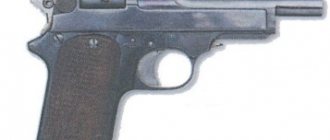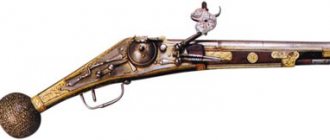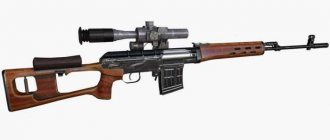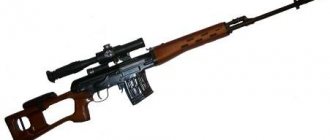Chinese invention
Gunpowder was invented in China around the 6th century. Its simplest composition is a mixture of saltpeter, charcoal and sulfur.
Very often in near-historical novels, heroes make gunpowder with powerful explosive force from literally everything that comes to hand. However, to obtain an effective explosive, the purity of the substances being mixed and the correct proportion are very important, otherwise the result will only be a stinking mess.
The Chinese apparently also faced this problem, since they initially used the gunpowder mixture for fumigation for medical purposes. Actually, the word “gunpowder” is translated from Chinese as “healing fire.”
By the 8th century, the Chinese were finally able to obtain gunpowder in the form we are familiar with. But it was also used primarily for fireworks and firecrackers to scare away evil spirits. Only a hundred years later gunpowder began to be used as a weapon - in the form of primitive grenades, rockets and bombs.
In addition, the Chinese used “fire spears” - a prototype of future guns. A powder charge was poured into a fallen bamboo trunk, and then shot from small stones or chopped metal. Such a weapon made it possible to hit infantry and cavalry at a distance of 10-15 meters, but for obvious reasons it was disposable, and with the slightest error in the proportion of the charge, the shooter also became disposable.
In the 12th century, Chinese scientists and gunsmiths created the first cannons by casting bronze and copper barrels.
The Mongols, having conquered China, became very interested in gunpowder weapons. And it was actively used, including during the campaign against Rus'.
Along with the Mongol invasion, gunpowder spread throughout Asia and then came to Europe. The German monk Bertald Schwarz, who was previously credited with the invention of gunpowder, was in fact only studying and improving the explosive formula received from the East .
Hand grip for two
Russian warriors first became acquainted with firearms in 1376 during a campaign against Volga Bulgaria under the leadership of governor Dmitry Bobrok-Vola, a future hero of the Battle of Kulikovo. This campaign was organized to expel the proteges of the Zalota Horde from the Bulgarian lands.
In the battle, the Tatars used firearms (“thunders from Pushchakha”), hoping not so much to kill as to intimidate the Muscovites and their horses. The Russian troops were not afraid, they won, and the captured guns were taken to Moscow. These were “mattresses” - guns with a short barrel for mounted shooting and “great guns” - full-fledged bombards.
Soon Russian artisans mastered the production of their own artillery . In addition to large heavy cannons, they also began to produce hand-held weapons - hand cranks.
Hand grip
Hand grips were a small blank made of copper or bronze with a barrel drilled inside and a ignition hole at the end. The hand grip was attached with clamps to a long wooden stock and, in fact, was no different from the cannon, except for its size.
Such weapons were loaded with a lead or stone bullet with a diameter of up to 3 cm. Two people usually fired from a handgun. One warrior held and pointed the weapon at the target with both hands, and with the other, using a smoldering wick, he ignited the charge through the ignition hole.
The sighting range of the handbrake was short, about 20 steps, but they were valued for their powerful damaging effect, as well as the roar and puffs of acrid smoke that frightened enemy horses and warriors unaccustomed to “fiery battle.”
Already in 1382, the first Russian artillery and hand weapons received a baptism of fire during the defense of Moscow from Khan Tokhtamysh. For two days, the city’s defenders successfully repulsed one assault after another, and only cunning and betrayal helped the khan take possession of the city.
The first use of artillery to protect Moscow from the Horde
After the Battle of Kulikovo, the Grand Duke of Moscow Dmitry Ivanovich refused to pay tribute to Tokhtamysh, after which the ruler of the Golden Horde went with his army to Moscow, having previously killed and captured all the Russian ambassadors and merchants who were at that time in the city of Kazan. Tokhtamysh left the convoy behind. He wanted to approach Moscow as quickly as possible in order to take the prince by surprise.
Dmitry Donskoy learned about the khan’s insidious plan. With his squad, he moved towards Kostroma. The abandoned city was defended from the Horde by Ostey Gediminovich. He repelled the enemy assault with artillery. Previously, the chronicles had never mentioned the use of cannons by Russian soldiers.
From Moscow to the outskirts
In the 15th century, the quality of steel improved, which made it possible to make barrels from forged long strips. Such barrels were lighter than bronze ones; in addition, the range and accuracy of shots increased.
The new weapon, nicknamed “squeakers” for its characteristic sound, was equipped with a special device - serpentine. It was an S-shaped lever, pressing which brought the smoldering end of the wick to the ignition hole. Thanks to this simple device, a warrior could shoot alone.
Arquebus, or Russian arquebus
Compared to its Western European counterpart, the arquebus, the arquebus was a heavier and more formidable weapon with a larger caliber and barrel length. The range of aimed fire was 50 steps, and the range of salvo fire was 200 steps. The power of the squeaker was also given by a significant charge of gunpowder. The arquebus confidently pierced armor at a distance of 25 steps, the arquebus - at a distance of 75 steps.
Russian gunsmiths mastered the technique of granulating gunpowder, which increased the combustion rate and charge power. The development of iron casting made it possible to establish mass production of guns, because now expensive copper or bronze was not required for the barrels.
Since 1475, the production of new weapons in Moscow was in charge of the Cannon Hut, later renamed the Cannon Yard . This institution was located on the Neglinnaya River in the area of modern Lubyanka Square and Pushechnaya Street. Since the middle of the 16th century, the Cannon Yard was a state-owned manufactory with smelting furnaces, forges, foundry barns and other enterprises.
Cannon Yard
Forging hammers were driven by water. Up to 400-500 people worked, including masters, apprentices and apprentices of 32 professions (gunners, litts, blacksmiths, etc.).
Moscow craftsmen created many weapon masterpieces, including the famous “Tsar Cannon”, the mighty “Wolf”, “Lion” and “Tsar Achilles” guns. They quickly mastered any technical innovations, such as percussion flint locks for muskets and complex caps locks for pistols.
Following Moscow, the production of gunpowder weapons began to develop in other Russian cities. Foundries, saltpeter purification plants, and mines for its extraction were built.
"The Tsar Cannon" is a masterpiece. created by Russian gunsmiths
FIREARMS
Firearms first appeared in Rus' between 1376, when Russian troops were fired on by firearms of an unknown type from the wall of one of the cities of Volga Bulgaria, and 1382, when cannons and mattresses (short-barreled cannons) along with crossbows and stone-throwing vices were first used for the defense of Moscow. It is logical to assume that these new weapons were brought to Moscow during the period of intensive military preparations preceding the Battle of Kulikovo Field.According to written evidence, in Eastern Europe and Asia firearms were used: in 1374 by the Teutonic Knights, in 1378–1381. - in Hungary, in 1382 - in Lithuania, in 1383 - in Poland and Bohemia, in 1360–1370. - in Egypt, in 1389 - in Turkey, in 1379 - in Central Asia, in 1399 - in India and in 1366 - in China. In written sources, these cases are cited as worthy of attention, although firearms could have been used before; in addition, all cases of its first use coincide in time with the beginning of its spread throughout the lands of Central, Northern and Eastern Europe. It is noteworthy how close the above dates are to each other.
This fortress tower in Stolpie was built in the 2nd half. XIII—1st half. XIV centuries Apart from several gate towers in the largest cities, this tower became the first stone fortification in Rus'. Such towers appeared in the westernmost principalities; there may have been some influence from Central Europe; in Eastern Rus', such fortifications will arise only after many years.
A separate round tower in the city of Kamenets was built in the 2nd half. XIII century Known as the "White Tower", it was probably built on the model of similar border fortifications in Poland or Hungary.
Moscow Kremlin. This is what he might have looked like in gray. XIV century, when the Kremlin towers and walls were built entirely of wood; the only stone structures in this picture are the churches in the background.
Judging by the description of the first Moscow cannons, it can be assumed that they arrived in the capital from two different sides: on the western side - from Germany, Poland, Lithuania, and on the southern side - from the countries of the Black Sea basin or from the Middle East; however, their European origin is more likely.
By 1400, the arsenals of major Russian cities such as Novgorod, Pskov, Tver and Moscow undoubtedly already contained firearms, which may now have been manufactured by local craftsmen. The situation began to change in the middle of the 15th century, when cities began to be taken with the help of cannons. Artillery soon proved its power and ability to destroy fortified walls. Even in field battles, this new weapon showed how effective it was, and in 1480, while standing on the Ugra, Moscow riflemen hit many Tatars with arrows and bullets and drove them away from the river bank. This episode is worthy of attention as the first case of the use of firearms in a field battle in Rus'.
Princely Tower of the Novgorod Kremlin, built in the 15th century. This is how it looks from the side of the Spasskaya Tower. Between the towers there is a ruined wall, consisting of outer and inner brick walls, the space between which is filled with cobblestones.
Beginning in 1471, in the offensive operations of the Muscovites against Novgorod, Tver, Fellin, Serpeisk and Vyborg, the archers began to play a decisive role. Aristotle Fioravapti, who arrived in Moscow in 1475, organized one of the largest foundries in Rus' for the production of cannons. Following this, in 1484, 1490, 1494, 1504, 1507 and 1513. Greek, Italian, German, Scottish and other gunsmiths arrived in Moscow - clear evidence of the enthusiasm and speed with which firearms were introduced in Rus'. Since that time, one musket barrel, two original cannons and 28 descriptions of similar objects have reached us intact. Comparing different groups of this type of weapon, we can come to the conclusion that there was a system for casting it according to standard forms. The molds, and therefore the barrels cast in them, were characterized by the same length and caliber, and, apparently, were made using identical measuring tools. In more recent times, firearms foundry technology has changed little, except that gun barrels have become heavier. Standardization made possible the large-scale production of firearms, as a result of which, in a very short time, the entire arsenal of firearms in Rus' was modernized and significantly replenished. Thus, long before the military reform of Peter the Great at the beginning of the 18th century, state regulation put an end to the unauthorized production of cannons and rifles. The generally accepted opinion that before Peter the Great in Rus' there was complete confusion in the sphere of military production is fundamentally wrong.
Pokrovskaya tower of the Novgorod Kremlin. This very massive brick fortification was built in the 14th–15th centuries. and is one of the very first towers at the time of creation. (Photo by D. Nicollet)
The Russian fortress Ivangorod stands on the banks of the Narva River, which flows into the Baltic Sea. It was built between 1496 and 1507. and defended the western borders of Rus'; was facing with its loopholes directly at Hermannsburg Castle, located on the other side of the river, the easternmost fortress of the Teutonic Knights in Estonia.
Reconstruction of the fortified wooden city of Olgov on the banks of the river. Oka. This is how he may have been in the 13th century. (G.V. Borisevich)
Judging by the description of the foundry, which was left by masters Yak in 1483 and Peter in 1501, they also began making cannon carriages. The invention of cannon carriages gave impetus to the development of field artillery, as happened in the Hussite army in the Czech Republic. An Italian named Pavel Joviy wrote (translated by Dmitry Gerasimov) the following: “In the Moscow Kremlin you can see many copper (perhaps meaning bronze) cannons, cast by skillful Italian craftsmen and mounted on wheels.” From the published text, we can conclude that Pavel Joviy means guns on wheeled carriages, thanks to which they became much more mobile and could be used in the field, as happened in the Battle of the Ugra River in 1480.
Section of individual elements of the tyn of the 13th–16th centuries. - the simplest palisade, then a more complex fort of an inclined type and forts reinforced on the inside with goats, or scaffolding, and canopies, or platforms. (O. V. Tumkina)
Along with the production of cannons, workshops for casting cannonballs and making gunpowder appeared in Moscow; the first mention of them dates back to 1494; all evidence points to a transition to granular powder from the earlier and less practical "pulp powder".
In 1513, during the attack on Smolensk, according to one of the eyewitnesses, up to 2,000 large and small arquebuses were launched. Simultaneously with the sharp increase in the number of firearms, there was a significant improvement in their quality.
Of all the varieties of firearms, cannons were usually the first to receive characteristic nicknames, and in the earliest written records they are sometimes called "great." Since 1382, guns have been constantly mentioned when talking about the defense of cities. Since 1399, cannons have been used in the defense of Wagenburgs - a type of field fortification - as well as in the assault of various types of fortifications. Some sources especially emphasize the gigantic size of the so-called “great guns”; there is a description of a cannon, which in 1463 was transported on 40 carts; other authors cite cases where guns exploded during the first test shot and when they became unusable after three shots. However, despite their monstrous weight and technical imperfections, these massive guns made huge gaps in city walls and caused such destruction that cities often surrendered after the first bombardment.
Construction of the upper part of a wooden reinforced wall with an overhanging gallery. Pay attention to the hole in the floor of the gallery, through which the besieged had the opportunity to shoot at the enemies or throw stones at them. (O. V. Tumkina)
Taras. Two log houses are filled with stones or earth, and two remain empty - they will later house the defenders. (O.V. Tumkina)
Russian arquebus, 1375–1450. The short barrel is attached to the wooden stock by two metal rings. (State Historical Museum, Moscow)
The production of the 1000-ton “great” cannon in 1448 was considered an event of national importance. And cast much later, in 1585, the famous Tsar Cannon was made by master Andrei Chokhov according to the technologies of the mid-15th century, although it was two and a half times heavier than any of its predecessors. This weapon, with a caliber of 920 mm and a length of 5.34 m, is rightly considered one of the largest in the medieval world.
The cannonballs with which Russian “battering” cannons of the 15th century were loaded often reached the height of the “knees” or “belt”. Of course, they were still made of stone. At the end of the 15th century. In Rus', a new type of weapon appeared, capable of firing projectiles along a hinged trajectory - a mortar designed for shelling the interior of a fortress. On the back side of the city wall, such a huge weapon, due to its low mobility, could not be used effectively enough to defend the city. Instead, until 1474, small cannons mounted on them were used to defend the city walls.
Along with cannons, mattresses are mentioned in the chronicles. They were usually used in the defense of fortified centers, as in 1382, or in the siege of fortresses, as was the case in 1408. By the end of the 15th century. mattresses are no longer used in field battles, but are still used in the defense of fortresses. The word “mattress” is borrowed from the ancient Turkic language and comes from the words “tufak”, “tyufenk”, meaning a hunting blowpipe. The word may have meant a weapon for throwing "Greek fire", but it soon became the name of the earliest type of light or hand cannon. The term took root in the Middle East and eventually came to mean a gun.
Reconstruction of a wooden city-type fortification with one wooden tower. (O.V. Tumkina)
Fortress Old Izborsk; towers Vyshka and Ryabinovka, erected at the end. XIV century
The Russians called special German-made cannons mattresses, and it was not at all necessary that only eastern-style cannons were then called the oriental word. It is possible that the word mattress was used to refer to guns with a wide or slightly flared bore.
Mattresses of the 15th century. They were used not only as defensive weapons, but also when attacking cities, but firing a light cannon at fortified walls brought little benefit, which may be why some other types of cannons were invented. Thus, in the book “The Cannons and Arquebuses Description Book” there is an unexpected mention of mattresses with a barrel caliber from 4 to 8.85 cm. Probably, mattresses with relatively short barrels with a bell, firing buckshot, were originally intended to destroy enemy personnel. As this early type of firearm was improved, it could be radically redesigned, and in the last quarter of the 15th century. mattresses were replaced by more accurate and compact weapons that fired bullets.
These were arquebuses, which begin to be mentioned in chronicles as a weapon used in storming cities in 1408, and as one of the means of their defense in 1450; then, in the 1470s, their importance grew rapidly and they became much more popular than mattresses. This development of firearms was a consequence of the increase in the lethality and accuracy of the metal bullet. The earliest arquebuses, the structure of which can be more or less accurately described, were cast at the Moscow Armory Yard and bore the mark of the master and the date of manufacture. Judging by the surviving examples of similar German and Swedish arquebuses, one of the earliest Russian arquebuses was made between 1400 and 1450.
Miniature from the 15th century list. the lost original of the Radziwill Chronicle (XIII century), depicting a cavalry attack on the gates of a city or fortress.
Detail of the left side of the icon “Miracles of Our Lady of the Sign” (1460s). Two people of noble birth are depicted (note their headdresses) leaving Novgorod. The defenders of the city gathered under the icon of the Mother of God, who, according to legend, miraculously saved Novgorod during the siege of it by the Suzdalians. Novgorodians are armed with spears and large teardrop-shaped shields. (Museum of the History of Art and Architecture, Novgorod)
The Novgorod army defeats the Suzdal army. Icon “Miracles of Our Lady of the Sign” (1460s). In the foreground are heavy cavalry armed with spears; note the two clearly visible curved sabers in the upper center of the image. (Museum of the History of Art and Architecture, Novgorod)
Between groups of priests and, probably, townspeople, a figure of a man is depicted in a typical medieval Russian cap with a berdysh. History of Novgorod, Russian manuscript, 15th century. (Museum of the Novgorod Kremlin, Novgorod)
Corner Vodovzvodnaya Tower of the Moscow Kremlin. It was built around 1490 according to the design of the Italian architect Nietro Antonio. (Photo by D. Nicollet)
Late medieval Russian helmets:
(1) Helmet with grooved crown. XIV–XV centuries (State Historical Museum)
(2) Helmet from the 15th century. from Northern Rus'. Helmets of this type are widespread both in Rus' and Iran. (Museum of the Novgorod Kremlin, Novgorod)
Table of contents








